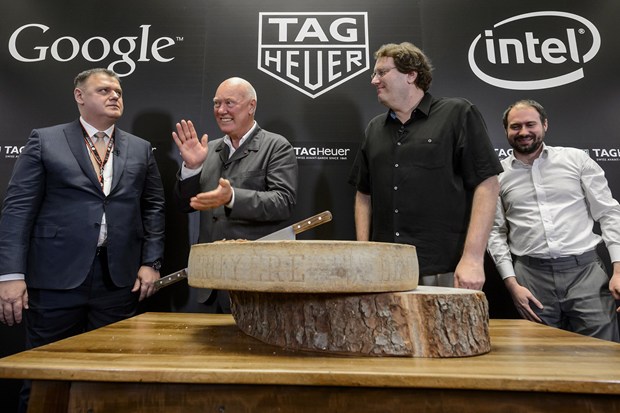
Fear Of Apple Watch Will Be Swiss Watch Industry's Undoing
When digital watches flooded the scene, they were easily copied, explaining why the 1980s-era transition from analog to digital happened so fast. But Apple’s approach — they own the hardware, software and services — will be nearly impossible for watchmakers to replicate. Devices like the TAG Heuer/Google watch that run Android Wear will continue to try to compete, but from what I’ve seen from Apple, the Cupertino giant could have an edge for at least a year or two, if not more.
It’s certainly true that Apple has a distinct edge in its position to control the mainstream narrative, but as I’ve written before, this isn’t the Quartz Crisis. That movement (ha!) was predicated on dramatically increasing the affordability of a borderline global commodity. In a booming connected world, more and more people cared what time it was, but not everyone could afford an intricate, delicate, mechanical Swiss watch. People had a task in mind, and they had a bottom-dollar budget.
And while I firmly believe that once they try them out, most folks will feel the same way about smartwatches in general, the one thing this isn’t is a race to the bottom for a seeming bare necessity. The rules — and the risks — are very different for a luxury product that, even at its cheapest entry price, is still wholly in the realm of “want,” not “need.” A dramatically different type of customer needs a Swatch than wants Apple Watch. Or a TAG Heuer, for that matter.
Indeed, out of all the players in the big-name Swiss market, TAG Heuer is the most public in its challenging of Apple Watch. But they’re admittedly out of their league, and their business model — which should have no problem embracing the luxury concept — seems to be floundering mightily as it tries to reconcile exactly what Apple Watch means to their industry. And it might mean absolutely nothing. TAG Heuer general director Guy Sémon admits as much:
We don’t know for the moment if the market exists. We are watchmakers, but we have to consider the connected watch because we had a bad experience in the past with quartz at the beginning of the 70s. …
If it is possible, I prefer to be safe. I don’t know where this train is going, but what I do know is that I have to be on the train. …
How to make a connected watch? The normal approach is to copy Apple — but Apple Watch is not a watch, it is a connected device on the wrist. There is a big difference. Why? Because this one [Sémon holds up the brand’s new Carrera Heuer-01] looks good. Better finishing, design. This is not an iPhone. You buy an iPhone and in three years you put it in the trash. But not a watch. You have to keep a watch.”
If “Apple Watch is not a watch,” then why is a famous Swiss watch brand trying to take on the thing? I still say this sort of tactic cheapens the challenger’s name and knocks prestige of ownership down a peg. Nobody wants to wear a product from a second-rate, reactionary “me too” brand. At least, not the folks in the market for a several-thousand-dollar timepiece.
Until the Swiss market can find a way to offer a mechanically-driven “analog” smartwatch with complication-based alerts and alarms (which is, frankly, a really fun idea), I feel like it might be better served — financially and philosophically — by staying out of the smartwatch industry altogether. Entering the race is a patent admission that they don’t even trust in the timelessness and tradition they’ve been pushing all these years.
No matter how elegant their smartwatch designs, that’s a very bad look.
[Image via Wired]